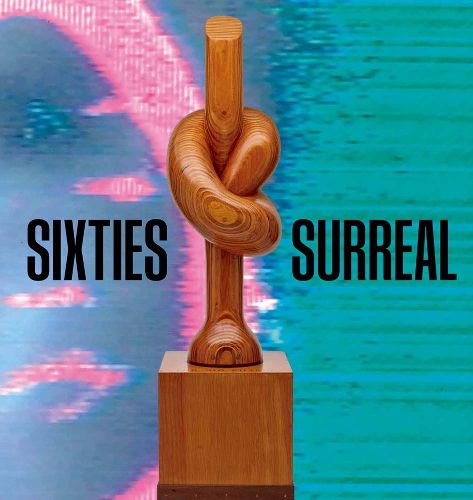Readings Newsletter
Become a Readings Member to make your shopping experience even easier.
Sign in or sign up for free!
You’re not far away from qualifying for FREE standard shipping within Australia
You’ve qualified for FREE standard shipping within Australia
The cart is loading…






A reevaluation of American art of the 1960s that foregrounds the role of surrealism during a period of social and political upheaval
Challenging what we think we know about art of the 1960s, this volume moves beyond the established movements of pop art, minimalism, and conceptualism to shine a light on how American artists created a unique type of surrealism, making works suffused with eroticism, dread, wonder, violence, and liberation. A series of essays reveals how this new surrealism enabled artists to reconnect art to an increasingly untethered reality following the period of rapid postwar transformation and to imagine new worlds and models for art rooted in political and social change. Presenting a new framework to understand the work of artists such as Lee Bontecou, Franklin Williams, Nancy Grossman, Mel Casas, Yayoi Kusama, Jim Nutt, John Outterbridge, Ralph Arnold, H. C. Westermann, Romare Bearden, Louise Bourgeois, Christina Ramberg, and Robert Arneson, this study features an expansive chronology that highlights how a broad group of artists across the United States connected to each other through exhibitions, galleries, and collectives, offering a fresh perspective on how artists in the 1960s harnessed psychoanalysis, wordplay, and assemblage, among other strategies, to create new horizons for subject matter and form that continue to reverberate in American art today.
Distributed for the Whitney Museum of American Art
Exhibition Schedule:
Whitney Museum of American Art, New York
(September 24, 2025-January 29, 2026)
$9.00 standard shipping within Australia
FREE standard shipping within Australia for orders over $100.00
Express & International shipping calculated at checkout
Stock availability can be subject to change without notice. We recommend calling the shop or contacting our online team to check availability of low stock items. Please see our Shopping Online page for more details.
A reevaluation of American art of the 1960s that foregrounds the role of surrealism during a period of social and political upheaval
Challenging what we think we know about art of the 1960s, this volume moves beyond the established movements of pop art, minimalism, and conceptualism to shine a light on how American artists created a unique type of surrealism, making works suffused with eroticism, dread, wonder, violence, and liberation. A series of essays reveals how this new surrealism enabled artists to reconnect art to an increasingly untethered reality following the period of rapid postwar transformation and to imagine new worlds and models for art rooted in political and social change. Presenting a new framework to understand the work of artists such as Lee Bontecou, Franklin Williams, Nancy Grossman, Mel Casas, Yayoi Kusama, Jim Nutt, John Outterbridge, Ralph Arnold, H. C. Westermann, Romare Bearden, Louise Bourgeois, Christina Ramberg, and Robert Arneson, this study features an expansive chronology that highlights how a broad group of artists across the United States connected to each other through exhibitions, galleries, and collectives, offering a fresh perspective on how artists in the 1960s harnessed psychoanalysis, wordplay, and assemblage, among other strategies, to create new horizons for subject matter and form that continue to reverberate in American art today.
Distributed for the Whitney Museum of American Art
Exhibition Schedule:
Whitney Museum of American Art, New York
(September 24, 2025-January 29, 2026)